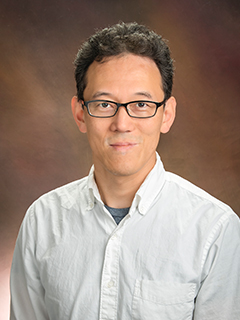HOW CAN WE HELP YOU? Call 1-800-TRY-CHOP
In This Section

Dr. Takano's research focuses on basic epilepsy and related neuroscience research centered on advanced optical imaging techniques such as fluorescence lifetime imaging and two-photon microscopy; and application of micro- and nanotechnology like graphene transparent electrode to functional cellular imaging.
Bio
Dr. Takano’s research focuses on concepts related to neuroscience and engineering, with a particular interest in functional optical imaging to provide further knowledge on the basic mechanisms of epilepsy.
Dynamic Imaging of Nervous System Function: Dr. Takano specializes in characterization of the spatiotemporal firing patterns of multiple neurons using in vitro and in vivo multicellular calcium imaging by two-photon microscopy and laser scanning confocal microscopy. His expertise in analytical instrumentation enabled him to implement various imaging technologies such as fluorescence lifetime imaging, combined use of calcium imaging and voltage sensitive dye imaging, whole-field UV photolysis of caged compounds, optical fiber-based fluorescence imaging, and photon counting system for luminescence probes. More recently, he has implemented awake in vivo calcium imaging of mice navigating a virtual reality environment.
Micro- and Nanotechnology: Dr. Takano was originally trained in bioengineering/analytical chemistry laboratories and focused on the application of micro- and nanotechnology to chemical and biological analysis, especially using scanning probe microscopy. In 2014, Dr. Takano conducted a collaborative project aiming to prove that graphene, an atom-thick electrically conductive carbon sheet, could be used as a transparent electrode for neurosignal recording. The study was the first in the world to show that graphene can be used as a neurosignal recording electrode. In 2018, he obtained an NIH grant to study the cellular origin of high-frequency oscillations (HFOs), a potential biomarker for identifying the seizure onset zone, using graphene electrode array developed by a collaborator at Penn Engineering.
Training: As a core function of CHOP's Intellectual and Developmental Disabilities Research Center (IDDRC) and in a previous function at Penn, Dr. Takano has trained students and postdoctoral fellows in using advanced optical imaging techniques. Since 2005, he's trained and overseen more than 100 students and postdoctoral fellows from over 25 laboratories in the CHOP/Penn research community.
Education and Training
BS, Tokyo Institute of Technology (Biomolecular Engineering), 1992
MS, Tokyo Institute of Technology (Bioengineering), 1994
PhD, Tokyo Institute of Technology (Bioengineering), 1997
Postdoctoral Research Associate, Iowa State University (Analytical Chemistry), 1997-2000
Postdoctoral Research Associate, Iowa State University (Neuroscience), 2000-2001
Titles and Academic Titles
Research Assistant Professor of Neurology
Professional Memberships
American Chemical Society, 1997-
Society for Neuroscience, 2002-
American Epilepsy Society, 2018-
Publication Highlights
Active Grants/Contracts
Dynamic Contributions of Identified Neurons to High Frequency
- National Institute of Neurological Disorders and Stroke
- 2018-2020
- The goal of this project is to develop transparent electrode array and apply the technology to cellular imaging study, especially to identify the cellular origin of high frequency oscillation in models of epilepsy.